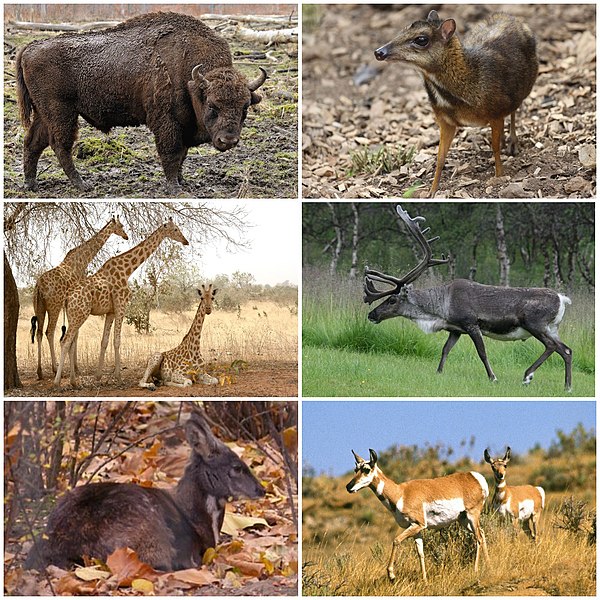The rumen, also known as a paunch, is the largest stomach compartment in ruminants and the larger part of the reticulorumen, which is the first chamber in the alimentary canal of ruminant animals. The rumen's microbial favoring environment allows it to serve as the primary site for microbial fermentation of ingested feed. The smaller part of the reticulorumen is the reticulum, which is fully continuous with the rumen, but differs from it with regard to the texture of its lining.
Rumen of a sheep from left. 1 Atrium ruminis, 2 Saccus dorsalis, 3 Saccus ventralis, 4 Recessus ruminis, 5 Saccus cecus caudodorsalis, 6 Saccus cecus caudoventralis, 7 Sulcus cranialis, 8 Sulcus longitudinalis sinister, 9 Sulcus coronarius dorsalis, 10 Sulcus coronarius ventralis, 11 Sulcus caudalis, 12 Sulcus accessorius sinister, 13 Insula ruminis, 14 Sulcus ruminoreticularis, 15 Reticulum, 16 Abomasum, 17 Oesophagus, 18 Spleen.
Ruminants are herbivorous grazing or browsing artiodactyls belonging to the suborder Ruminantia that are able to acquire nutrients from plant-based food by fermenting it in a specialized stomach prior to digestion, principally through microbial actions. The process, which takes place in the front part of the digestive system and therefore is called foregut fermentation, typically requires the fermented ingesta to be regurgitated and chewed again. The process of rechewing the cud to further break down plant matter and stimulate digestion is called rumination. The word "ruminant" comes from the Latin ruminare, which means "to chew over again".
Ruminant
Food digestion in the simple stomach of nonruminant animals versus ruminants



